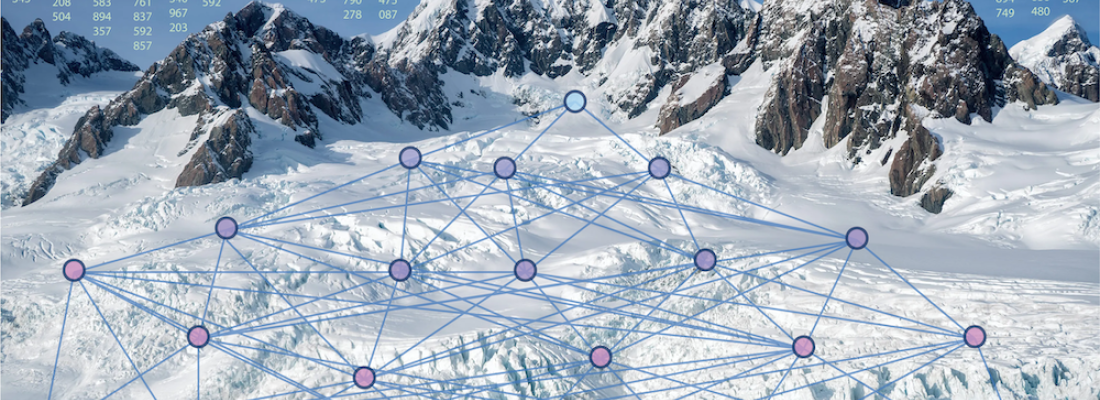Artificial intelligence helps scientists to better predict the evolution of glaciers under climate change
Published on 23 January 2022

In a new study published in the scientific journal Nature Communications, an interdisciplinary team of glaciologists, climatologists and mathematicians from Université Grenoble Alpes, INRAE, Utrecht University, Météo-France, Université Libre de Bruxelles and TU Delft, has used for the first time deep learning - a type of artificial intelligence - to simulate the future evolution of glaciers at a regional scale. As for most physical processes in nature, the evolution of glaciers and climate is nonlinear, meaning that they do not evolve in a constant manner through time. The ability to capture these nonlinear effects is precisely one of the main advantages of deep learning compared to the classic models currently used to simulate glacier evolution at regional-to-global scale. This marks a new generation of scientific models better equipped to predict the fate of glaciers under climate change.
These results have important consequences for our understanding of the future evolution of glaciers and sea level rise. Glaciers in the Arctic and Patagonia host the largest ice reserves in the world besides the Antarctic and Greenland ice sheets, and according to this study they will be the most affected regions by this nonlinear response to global warming. This calls for a revision of current predictions, adjusting glacier models to correctly take into account these complex processes. Artificial intelligence, combined with knowledge on the physics of glaciers and climate, will play a very important role in future discoveries.
Image: Artist impression of the artificial intelligence model, based on a deep neural network, used to model the future evolution of glaciers (in this picture: Aoraki/Mount Cook, New Zealand). The different nodes represent the artificial neurons, with the numbers representing the input data used to train the model. Attribution: photo: Tom Bernardo, artist impression: Jordi Bolibar.
Reference
Jordi Bolibar, Antoine Rabatel, Isabelle Gouttevin, Harry Zekollari, Clovis Galiez Nonlinear sensitivity of glacier mass balance to future climate change unveiled by deep learning. Nature Communications, 13, 409 (20 January 2022). https://doi.org/10.1038/s41467-022-28033-0
